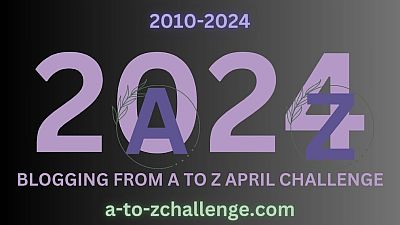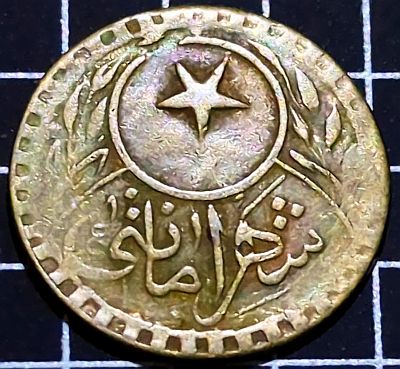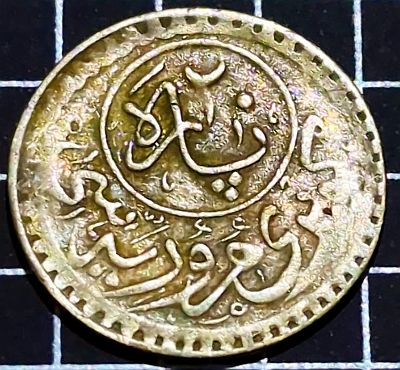An early 20th century bridge token from a fascinating city.
This is my entry for Day 15, “O” of the Blogging from A-Z April Challenge!
O = Ottoman Empire.

Obverse

We have covered pieces from Istanbul previously, from a Byzantine Follis issued in the sixth century (when the city was known as Constantinople) to a more modern Turkish coin issued in 1960. This piece was issued in 1913 which looking back, was an interesting period. Probably in much the same way as the “May you live in interesting times” (which almost certainly isn’t an ancient Chinese curse). Minted barely 100 years ago, which seems modern, however, the city was still Constantinople (it was renamed in 1930), and it was issued under the Ottoman Empire (which existed until after WWI).
I do like Arabic lettering, although I can never read it. It always reminds me of the beautiful Arabic Calligraphy in the Islamic world. Numista tells me the writing on this piece reads شهرامانتى which is “Şehremâneti” – which translates to “Mayoralty”. My guess is that is indicating the city as the issuer of the piece.
Reverse

The text on the reverse, “۲۰”, “پارة”, “كوپرى مروريى سى”, translates as “20 Para Bridge Toll”.
At the time, the Ottoman Empire used the Lira. 40 Para = 1 Kuruş and 100 Kuruş = 1 Lira. The smallest coins at the times were 5, 10 and 20 Para. Lower value coins were Nickel. Coins of 1 Kuruş and higher were silver, and coins of 25 Kuruş and higher were gold. This piece being brass (a base metal) fits with the value being low enough to not be silver. Also, although there were silver trade tokens around that time, there weren’t many.
The Numista page for the token includes the comment: “The toll was collected until May 31, 1930. It lists the token as a passage token for “Galata and Unkapi Bridges, Istanbul” These are shown on Google Maps, although the Unkapi bridge is now officially known as “Atatürk Bridge” or “Atatürk Köprüsü”. Mustafa Kemal Atatürk (1881-1938) was the founder and first president of the Turkish Republic.
According to Wikipedia, this 20-para token was valid for “backpacker animals”. Because too many examples were minted (10 million) they circulated as money as well.
It’s the fare you pay to the tills when you cross Galata Bridge, which is a bridge that connects two districts, Eminönü to Galata, the Muslim part (Eminönü) to the Non-Muslim part (Galata). Galata is an ancient settlement, originally settled by Italian levantens in early 1100’s. It was autonomous until 1700’s, and had his own ruler, called “Voivoda of Galata”. Today, Galata is an old town district, very touristic indeed.
The word “Voivoda” is borrowed from Balkans, back then rulers of semi-autonomous regions inside Ottoman Empire were called “Voivodas”. The naming tradition dates back to 1400’s, when the Ottomans have both ally voivodas and enemy voivodas in the Balkans.
AramcoWorld have several images of the Galata bridge as it would have looked in 1890, before this token was issued but likely looking very similar.
The old wooden Galata Bridge got burned down in 1992. A new, steel and metal bridge is made to replace it, since it is in a vital, busy traffic section of Istanbul. Cars coming from Eminönü and Aksaray have to cross it to get to Taksim, Beyoglu and Galata. It has a twin bridge, called Unkapani Bridge too, to relieve traffic.” (Note, as per the first line, Numista credits the Wikipedia page on the Galata Bridge.
In another thread on Numista, ZacUK commented: “It was a special coin to use for bridge money, worth 20 para. In truth, because the word ‘token’ had not yet entered our language, the bridge crossing token was called ‘bridge money’ and had the value of 20 paras. If someone who had no money, ran across to escape the bridgemen, two or three of them would chase him clear to the other side, collar him and sometimes bring him all the way back before throwing him off the bridge.”
One thing I really like about tokens is how atmospheric it can be imagining not only the time and country they were used in, but, as in this case, walking, maybe with a mule, across the bridge, before cars and modern life. Let us know what your most atmospheric token is?


Leave a Reply